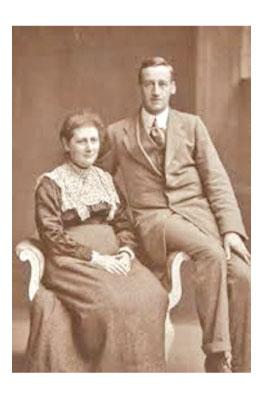
 "Born 150 years ago on July 28, the British children’s book author was far more subversive than you may have realised, writes Christian Blauvelt."
"Born 150 years ago on July 28, the British children’s book author was far more subversive than you may have realised, writes Christian Blauvelt."
July 28 2016
“Your father had an accident there; he was put in a pie by Mrs McGregor.”
Old Mrs Rabbit’s frightful warning to her children Flopsy, Mopsy, Cotton-tail and Peter appears on the opening page of Beatrix Potter’s first book, The Tale of Peter Rabbit. Aside from featuring perhaps the most dramatic use of a semicolon in children’s literature, it sets the tone for her work from the start: that horrors abound in a world of Darwinian struggle, but that these must be faced calmly.
Your parents, and perhaps your children, may be devoured by a vengeful property owner, or sold for tobacco; you may have your tail ripped off by an angry owl; an invading rat might tie you up in string and include you as the key ingredient in a pudding. But life goes on – disappointments must be faced and tragedies overcome.
Potter’s tales have been consistently popular with adults, as well as children, since The Tale of Peter Rabbit was published in 1902 when she was 36 years old. This is not just because they feature adorable creatures in harrowing situations; her talking-animal stories also comment on the era’s class politics, gender roles, economics and domestic life.
Did she examine British society through animals because she spent more time with animals than children, aside from her brother Bertram, when she was young? Because she wanted to rebel against the bourgeois values and morals of her wealthy middle class family – which had made its money in the textile industry – but only dared do so through furry surrogates? Because she could only publish children’s stories since her true passion, science, was a career field closed to women in the late 19th Century? Because she had a German tutor who introduced her to the back-to-nature ethos of the Romantics?
The one thing we do know for a certainty is that when Potter depicts mice wearing aprons or rabbits smoking pipes, her stories inevitably reveal as much about human virtues and follies as they do the natural world. As M Daphne Kutzer writes in Beatrix Potter: Writing in Code, “She never attempted to write a novel, but it is fair to say that a number of her small children’s books are in fact novels: their characters and their plots are as complex and open to interpretation as any novel published at that time.”
Commentary on British social relations of the early 20th Century appears everywhere in Potter’s work. Her writing style has a tone of observational detachment, as if she were a journalist profiling these animals.
(In The Tale of Ginger and Pickles she writes of the cat Ginger, following his financial bankruptcy, “I do not know what occupation he pursues,” as if she were reporting this story rather than making it up.) She rarely focuses on the very rich, nor the very poor; her characters work for a living. Like Kenneth Grahame’s anthropomorphic animals in
The Wind in the Willows, published six years after Peter Rabbit, Potter’s characters have been shaped by the transfer of power in British life from the landed aristocracy to the bourgeoisie, the class from which Potter herself had sprung.
“Nearly all of [the stories] are preoccupied with hierarchy and power,” writes Kutzer – and they reflect and embody middle-class values.
